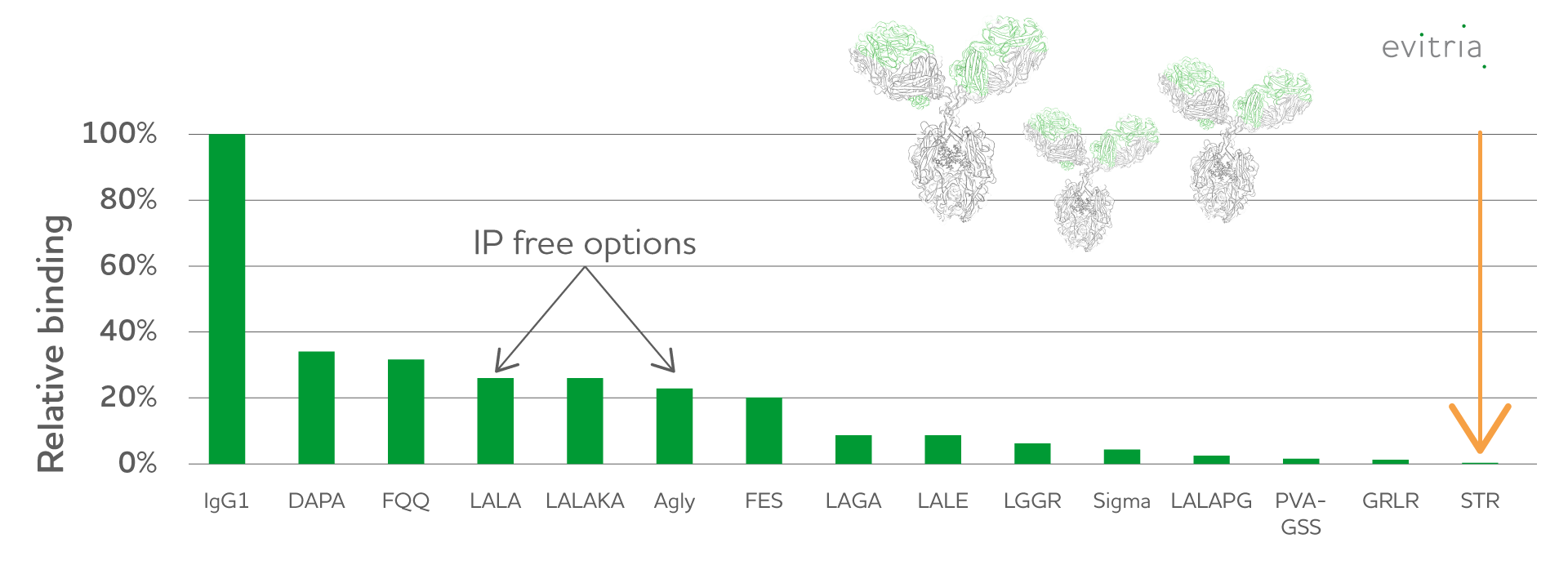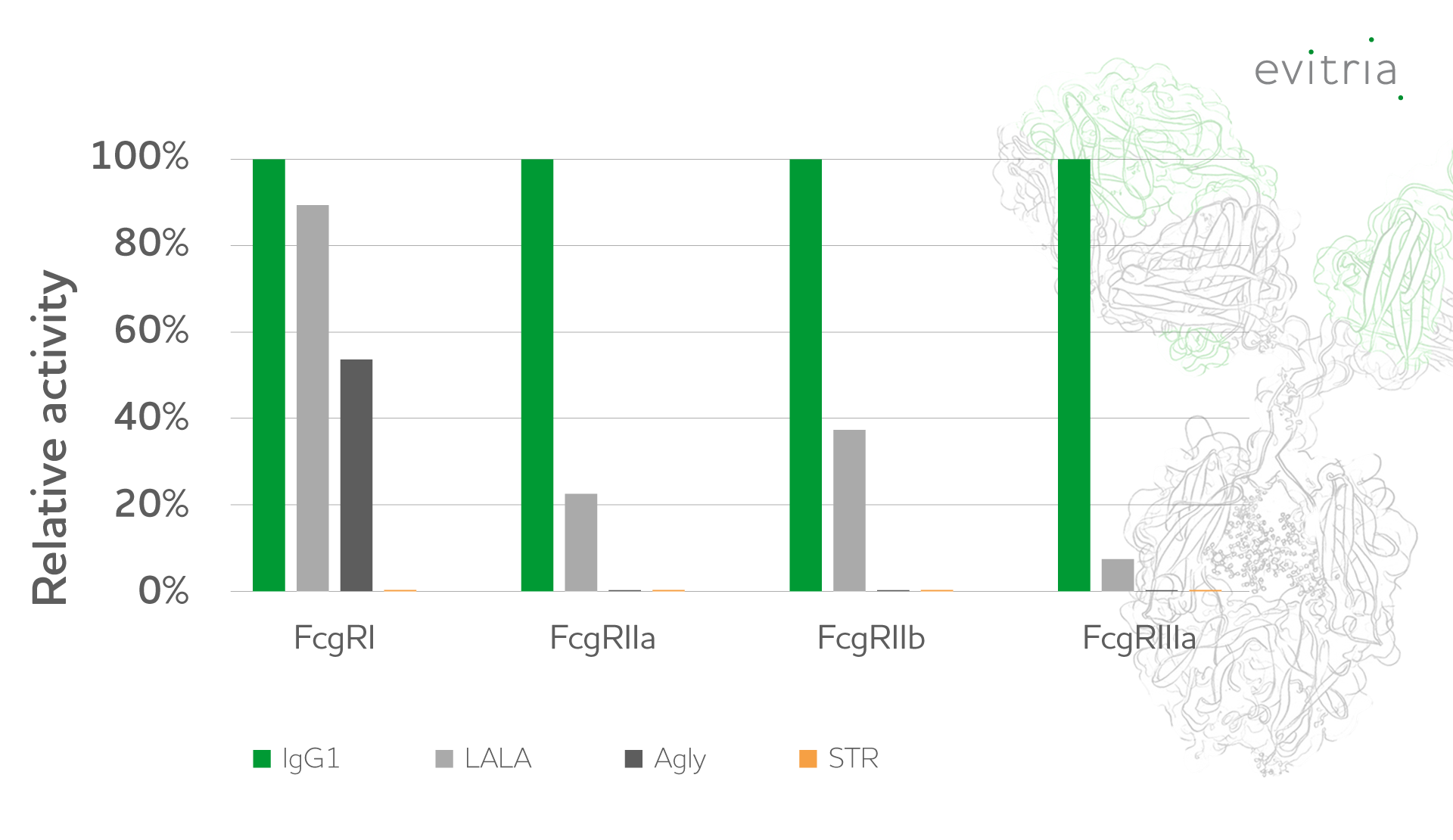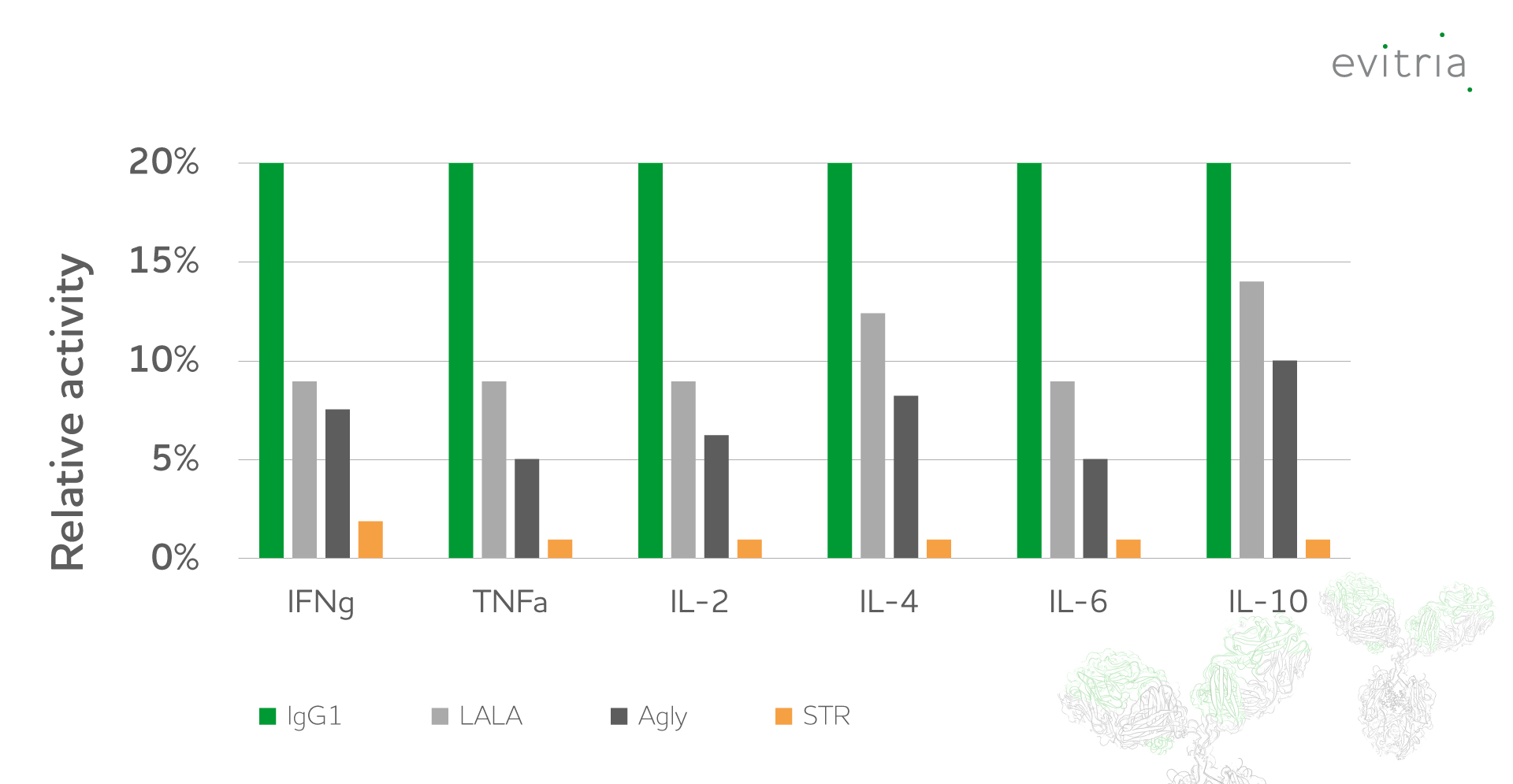Therapeutic antibodies can be split into two broad families: those which enhance cell killing by activation of the host’s immune system, and those which block an interaction or neutralize a pathway.
In neutralizing applications, activation of the host’s immune system can be an unwanted and dangerous side effect. This was demonstrated by the disastrous Phase I trial of TGN1412, where a cytokine storm triggered by the antibody hospitalized all the volunteers who received it.
Signalling between an antibody and the immune system is mediated through the Fc domain, so an increased interest in “silent Fc” domains has developed for neutralizing applications.
Diagnostic applications can also benefit from silent Fc domains – silencing reduces non-specific background staining in immunohistochemistry assays and non-specific background signalling in flow cytometry experiments.
Subscribe to our Newsletter
Get all the latest updates, and learn about our advancements in antibody production.
Subscribe now
A number of mutations have been described by academic and industrial groups to silence the Fc domain. These vary in their abilities, and have a variety of different IP constraints. The most common IP-free formats use LALA (L234A, L235A) or aglycosylation (N297A and others) modifications. Improvements on these systems have been developed by different industrial groups (e.g. LALAPG from Roche), but are often difficult or very costly to license. Furthermore, no set of mutations have yet been found that can be classed as truly silent – all displayed some level of residual activity.
However, this has changed due to ground-breaking work from mAbsolve, who have described the first truly silent Fc domain, STR. mAbsolve screened >300 different mutation combinations before they finalised their STR modifications, and have generated an extensive data pack showing the superior performance of this system. No binding or activity above background noise has been demonstrated across the Fc gamma receptors, far surpassing all previously described modifications. (Fig 1, 2, and 3). STR is readily available to license, and evitria is partnered with mAbsolve to offer truly silent Fc domains for research use.
Sourcing STR-silenced antibodies through evitria enables our clients to benefit by gaining:
Interested in learning more? Get in touch with your local contact today!

Figure 1: Comparison of SPR binding of different Fc domains to FcRI. STR is the only variant to show no detectable binding.

Figure 2: Comparison of binding of most commonly used Fc “silent” mutants binding to different Fc receptors in a cell-based reporter assay. In all cases the STR variant shows no significant binding above the background noise of the assay, whereas LALA and Agly show considerable levels of residual binding to some classes of Fc receptor.

Figure 3: Results of a cytokine release assay with human peripheral blood mononuclear cells (PBMCs) isolated from healthy donors and CD3 IgG1 antibodies with commonly used silencing mutations. STR showed no significant activity above buffer alone for all cytokines measured. In contrast, LALA and aglycosylated antibodies both showed considerable levels of cytokine release. IgG1 demonstrates 100% activity – not shown on graph.